Small Bedroom Design: 15 Genius Ideas to Transform Your Small Space into a Stylish Retreat
Table of Contents
A small bedroom design is a challenge for millions of homeowners, but with the right strategies, your small sleeping space can become a functional and beautiful haven. Whether you’re dealing with a studio apartment, a child’s room, or simply want to maximize every square foot, smart design choices can make your small bedroom feel spacious and surprisingly organized.
The secret to successful small bedroom design lies in understanding how to balance practicality and aesthetics while creating an environment that encourages rest and relaxation. Today’s homeowners are increasingly embracing the principles of minimalism and multifunctional furniture to create bedrooms that appear larger than their actual dimensions.
Understanding the Basics of Small Bedroom Design
Why Small Bedroom Design Is More Important Than Ever
Recent housing trends indicate that average bedroom sizes have decreased by 15% over the past decade, making efficient small bedroom design more important than ever. Your bedroom should be a peaceful sanctuary, no matter its size. When designed correctly, a small bedroom feels just as luxurious and comfortable as a larger space.
The psychology of space perception plays a significant role in how we experience our bedrooms. Environmental psychology studies reveal that well-designed small spaces feel more comfortable and secure than larger rooms, contributing to improved sleep quality and overall health.
Key Principles for Effective Small Bedroom Design
Successful small bedroom design revolves around three key principles: maximizing vertical space, creating visual flow, and maintaining functional spaces. These principles work together to create rooms that feel open, organized, and purposeful.
Visual continuity is essential in small bedroom design. When elements flow seamlessly from one area to another, the eye perceives a larger space than it actually is. This optical illusion becomes your best ally when designing a small room.
Popular Small Bedroom Design Styles That Optimize Space
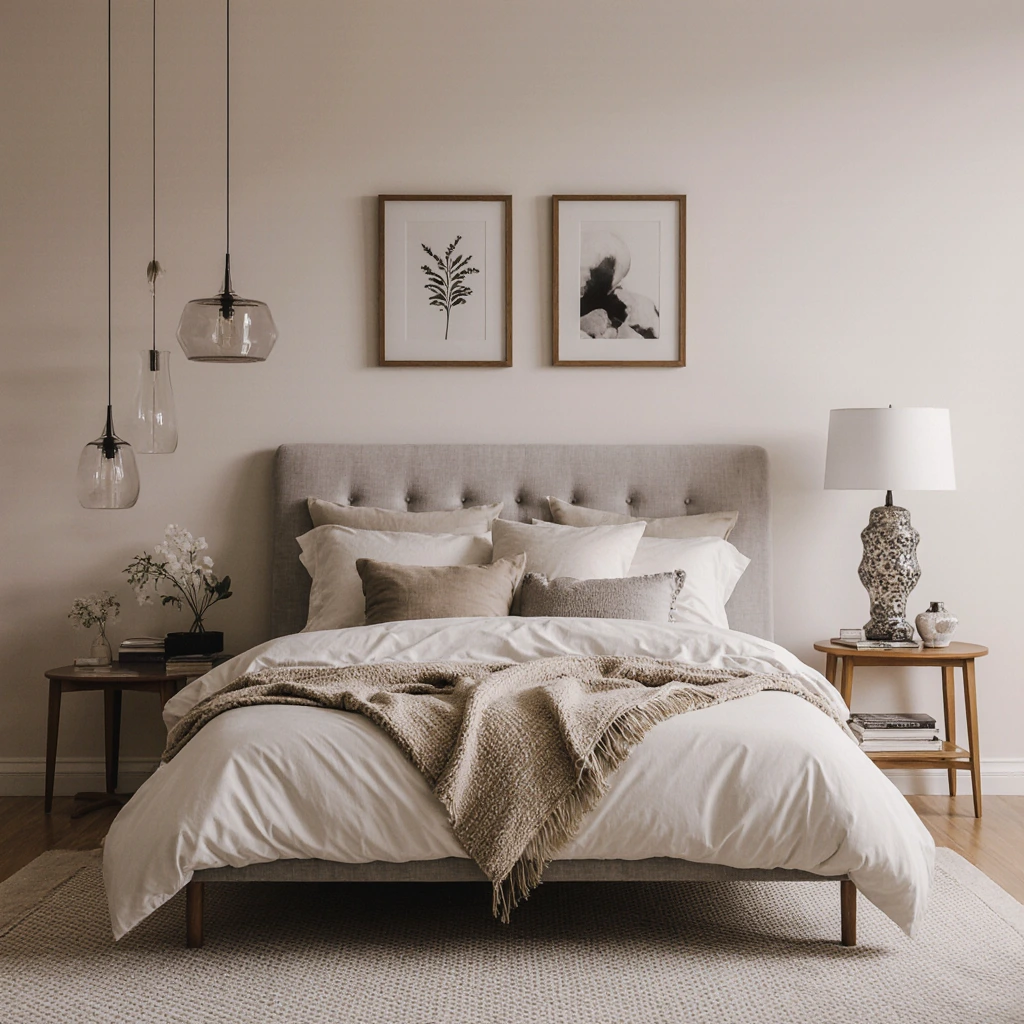
Minimalist Small Bedroom Design
Minimalist design naturally complements small bedrooms by emphasizing clean lines, neutral colors, and functional furniture. This style eliminates visual clutter while maintaining essential elements of comfort. The minimalist approach to small bedroom design focuses on quality over quantity, choosing versatile pieces.
Key features include platform beds with built-in storage, floating nightstands, and wall lighting. The color palette typically features white, gray, and natural wood tones, creating a fresh and uncluttered atmosphere.
Scandinavian-Inspired Small Bedroom Design
Scandinavian design brings warmth to small bedroom spaces through natural materials, cozy textiles, and functional furniture. This style emphasizes the concept of “hygge”—the Danish concept of comfort—making small bedrooms feel welcoming rather than cramped.
Elements include light wood furniture, soft neutral colors, and layered textiles such as wool throws and linen bedspreads. Natural light is maximized by sheer curtains, while candles and warm lighting create a magical evening atmosphere.
Industrial Small Bedroom Design
Industrial design works well for small bedrooms, utilizing exposed elements and raw materials. Metal bed frames, exposed brick walls, and concrete accents add a touch of beauty without overwhelming the space.
This style often includes vertical storage solutions, such as metal shelving units and hanging organizers, that complement the industrial design aesthetic while providing essential functionality.
Practical Tips for Maximizing Space in Small Bedroom Design
Select Compact Furniture
Choose versatile furniture for your small bedroom design. Storage ottomans provide seating and conceal bedding or seasonal clothing. Bed frames with built-in drawers eliminate the need for separate closets, freeing up floor space for other essentials.
Consider the size of your furniture carefully. Large pieces can overwhelm small bedrooms, while properly sized furniture maintains visual balance. Measure your space carefully before purchasing any new pieces.
Vertical Storage Solutions
Wall-mounted shelves, floating bedside tables, and tall, narrow cabinets draw the eye upward, creating the illusion of height in small bedroom designs. Install shelves near the ceiling to store items you don’t use daily, while keeping frequently used items at eye level.
Door organizers and wall hooks optimize the use of all available surfaces without consuming floor space. These solutions are particularly valuable in rental properties where permanent modifications are not possible.
Create Multi-Use Zones
Dedicate specific spaces in your small bedroom to different activities. A corner with a comfortable chair and good lighting can become a reading nook, while a small desk can be used as a workspace or decorating area.
Room dividers, such as curtains or decorative screens, can separate sleeping areas from work or study areas without the need for permanent walls. This flexibility is especially valuable in studio apartments or shared bedrooms.
Color Combinations That Enhance Small Bedroom Design
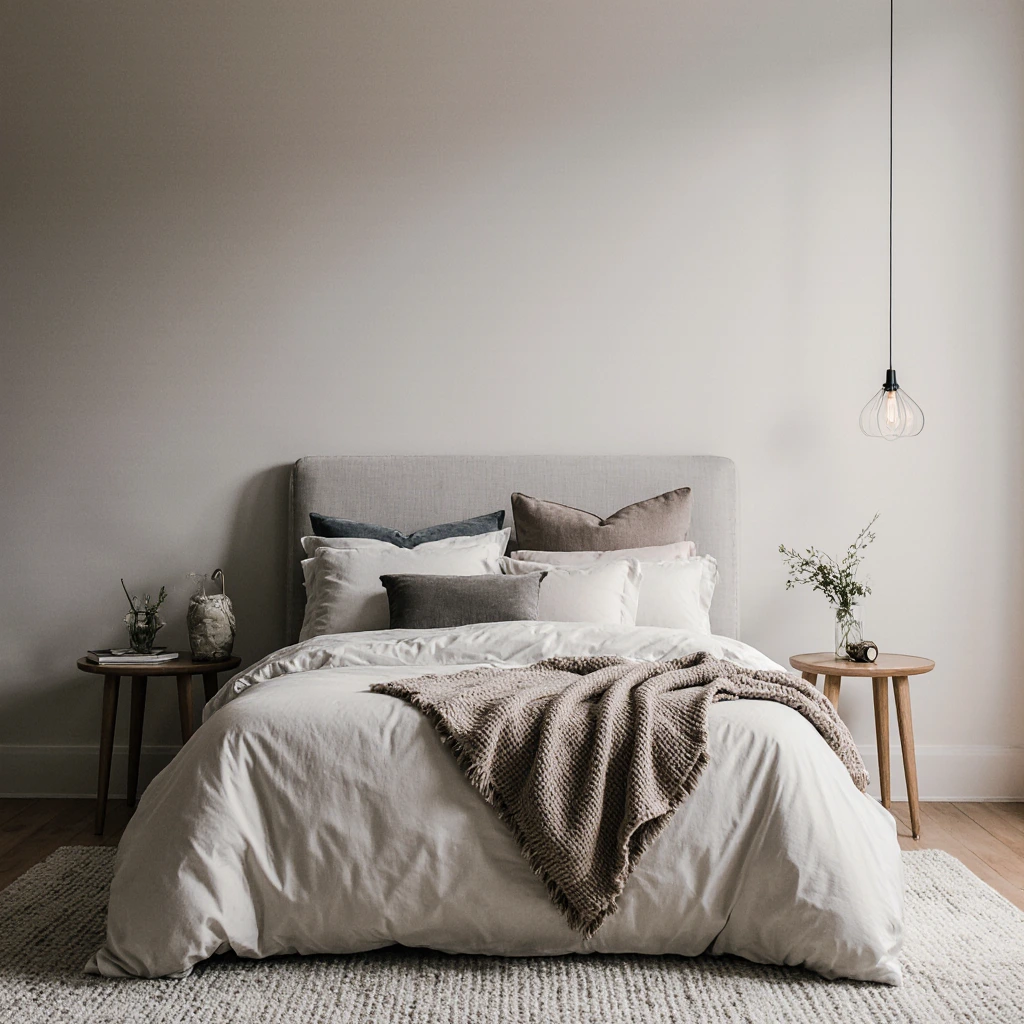
Light and Neutral Colors
Light colors reflect natural light and create the illusion of space in small bedroom designs. White, cream, and pale gray are excellent base colors that don’t overwhelm small rooms.
However, all-white can feel overwhelming. Add a touch of warmth with natural wood tones, soft beige shades, or off-white. These colors maintain the benefits of expanding the space while adding an aesthetic touch.
Strategic Accent Colors
Introduce deeper colors through accessories and textiles instead of wall paint in a small bedroom design. A dark blue pillow or an emerald green artwork can add a touch of personality to a room without making it feel smaller.
Follow the 60-30-10 rule: 60% neutral primary color, 30% secondary color, and 10% bold accent color. This combination ensures visual balance while preventing color overwhelm in tight spaces.
Monochromatic Color Schemes
Monochromatic color schemes create a seamless visual flow in a small bedroom design. Using different shades of the same color family eliminates visual gaps that can make spaces appear disjointed or fragmented.
For example, a monochromatic gray color scheme might include charcoal bed frames, medium gray walls, and light gray bedspreads. Add interest through texture rather than color contrast.
Lighting Ideas for Small Bedroom Design Ambiance
A Layered Lighting Approach
Effective small bedroom design incorporates multiple light sources at different levels. Overhead lighting provides general illumination, while task lighting serves specific functions such as reading or dressing.
Ambient lighting creates a relaxing and soothing atmosphere with warm, diffused light sources. Table lamps, string lights, and candles contribute to a comfortable and relaxing environment, essential for a good night’s sleep.
Space-Saving Lighting Solutions
Wall-mounted sconces free up space on the bedside table while providing focused reading light. Pendant lights suspended from the ceiling add a touch of elegance without taking up floor or countertop space.
LED strip lights placed under bed frames or behind a headboard create a floating effect, making the beds appear to float, adding visual interest while providing subtle ambient lighting.
Maximizing Natural Light
Make sure to use simple window shades in small bedroom designs to maximize natural light. Sheer curtains, or curtains that open from top to bottom and from bottom to top, provide privacy while allowing light to filter through.
Place mirrors strategically to reflect natural light throughout the room. A large mirror opposite a window can effectively double the amount of natural light in your small bedroom.
Common Small Bedroom Design Mistakes to Avoid
Furniture Overcrowding
The most common mistake in small bedroom design is trying to fit too much furniture into a limited space. Each piece should have a clear purpose and contribute to the room’s functionality.
Before adding new furniture, consider whether existing pieces can be rearranged or replaced with more space-efficient alternatives. Sometimes, removing a single piece can make the entire room feel more spacious.
Ignoring Vertical Space
Many people focus solely on floor space, ignoring walls and vertical space. Tall furniture pieces, wall-mounted storage units, and ceiling-height curtains all contribute to the feeling of spaciousness in small bedroom design.
Install shelves, hooks, and storage solutions at varying heights to make the most of every available inch of wall space.
Improper Traffic Planning
Ensure clear aisles are present throughout your small bedroom design. Furniture should be arranged to allow easy movement between the bed, dresser, and door without obstructions.
Measure aisles to ensure they are at least 24 inches wide for easy navigation. This layout prevents the room from feeling cramped or crowded.
Inadequate Storage Planning
A lack of storage space leads to clutter, making small bedrooms appear even smaller. Plan storage solutions for clothing, bedding, personal items, and seasonal items during the design phase.
Consider your specific storage needs and lifestyle when choosing furniture and organizing systems. Custom solutions are often better than generic storage products in small spaces.
Advanced Techniques for Designing Small Bedrooms
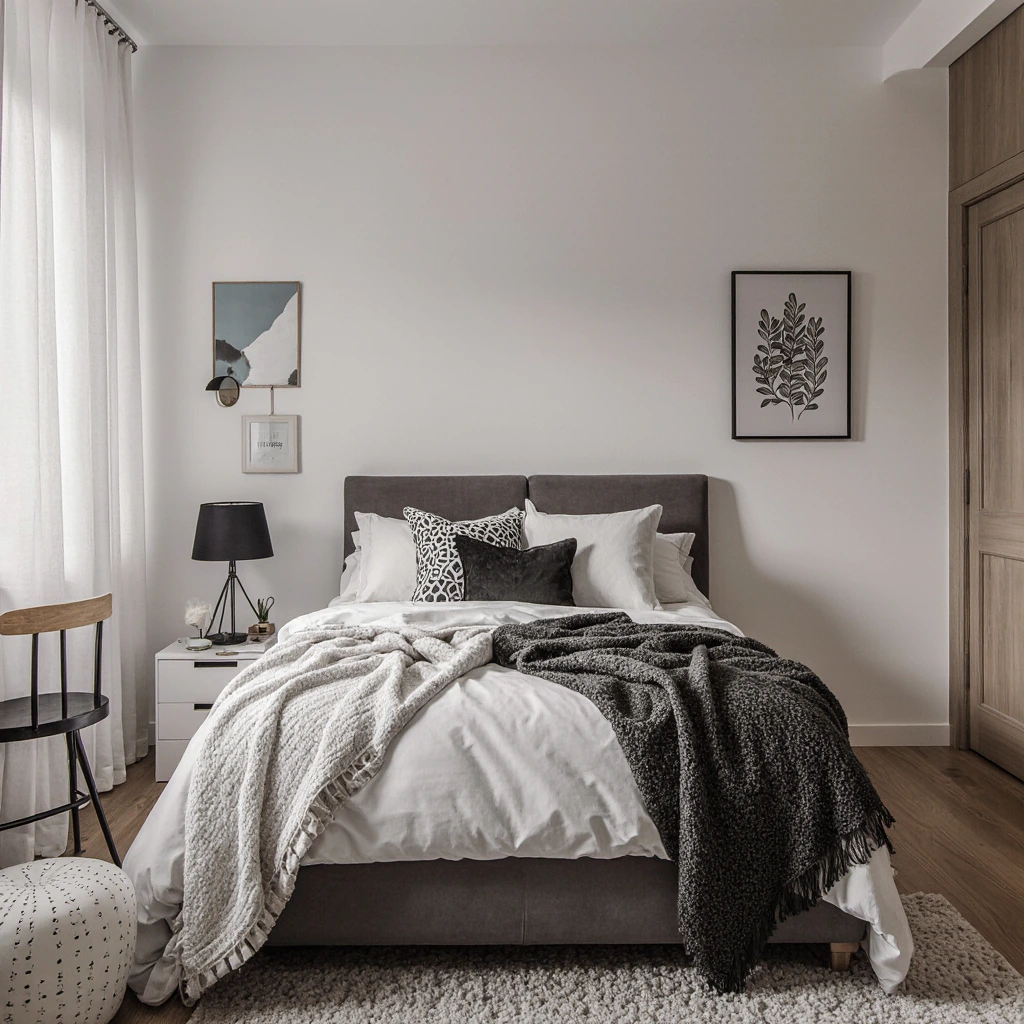
Create Visually Expansive Space
Use design tricks to make your small bedroom appear larger than its actual dimensions. Horizontal lines on walls or bedspreads make rooms appear wider, while vertical elements like high headboards create the illusion of height.
Floating furniture pieces, such as wall-mounted nightstands or beds with exposed legs, create the illusion of more floor space by revealing the floor beneath.
Incorporate Texture and Pattern
Add a touch of texture to bedspreads, rugs, and wall decor to add visual interest without relying on color in small bedroom design. Subtle patterns like geometric prints or organic fabrics add depth without overwhelming the space.
Use layers of different fabrics—soft cotton sheets, throw blankets, and soft rugs—to create a rich and inviting environment that feels sophisticated despite space constraints.
Integrate Technology
Smart home technology can enhance the functionality of small bedrooms without requiring additional space. Wall-mounted tablets for controlling lighting and temperature, wireless charging surfaces built into bedside tables, and voice-controlled devices eliminate the need for multiple devices and cords.
Consider remote-controlled motorized window shades, which eliminate cord management and create smoother walls.
Budget-Friendly Small Bedroom Design Solutions
DIY Storage Projects
Create custom storage solutions that fit your space and needs. Floating shelves, under-bed storage boxes, and wall organizers can be made at an affordable price using simple materials and tools.
Repurpose existing pieces for new functions—old ladders become blanket racks, vintage suitcases add storage and style, and wooden crates form modular shelving systems.
Strategic Shopping for Small Spaces
Focus your budget on essential pieces that make the most of your small bedroom design. A quality mattress and bedding add comfort and style more than multiple decorative accessories.
Shop thrift and vintage stores for unique pieces that add a touch of character without breaking the bank. Small bedrooms benefit from unique elements that add character and visual appeal.
Conclusion
Designing a small bedroom requires thoughtful planning, creative solutions, and strategic decisions, but the results can be extremely rewarding. By focusing on functionality, maximizing vertical space, choosing the right colors and lighting, and avoiding common mistakes, you can create a beautiful and comfortable bedroom regardless of space constraints.
Remember, a successful small bedroom design lies in creating a space that meets your specific needs and reflects your personal style. Don’t hesitate to experiment with different arrangements and solutions until you find what works for you, your lifestyle, and your preferences.
The secret to designing an exceptional small bedroom is to view limitations as opportunities for creativity. With the right approach, your small bedroom can become a stylish and functional haven that you enjoy spending time in.
Are you ready to transform your small bedroom? Share your before-and-after photos in the comments below, or sign up for our newsletter for more space-saving design tips and inspiration delivered straight to your inbox!
Best Amazon Picks :
FAQs
Q: What is the best bed size for designing a small bedroom?
A: Queen-sized beds fit most small bedrooms, providing comfort while leaving room for other furniture. Full/double beds are ideal for very small spaces, while single beds are ideal for children’s rooms or guest bedrooms where space is extremely limited.
Q: How can I make my small bedroom feel bigger without renovating?
A: Use light colors, add mirrors, make the most of natural light, choose furniture with legs to show off floor space, and clean the space regularly. Vertical storage and proper lighting can also create the illusion of spaciousness.
Q: What storage solutions are best for small bedrooms?
A: Under-bed storage, wall-mounted shelves, over-the-door organizers, and furniture with built-in storage units all maximize space efficiency. Vertical storage solutions are particularly effective for small bedrooms.
Q: Should dark colors be used in small bedroom design?
A: Although light colors are usually recommended, dark colors can work well if used strategically. Consider using dark accent walls or luxurious bedding with light walls and sufficient lighting to maintain the feeling of spaciousness.
Q: How do I arrange furniture in a small bedroom?
A: Place the bed against the longest wall, use corners for storage or seating, and ensure clear walkways. Move furniture away from the walls as much as possible and choose versatile pieces.

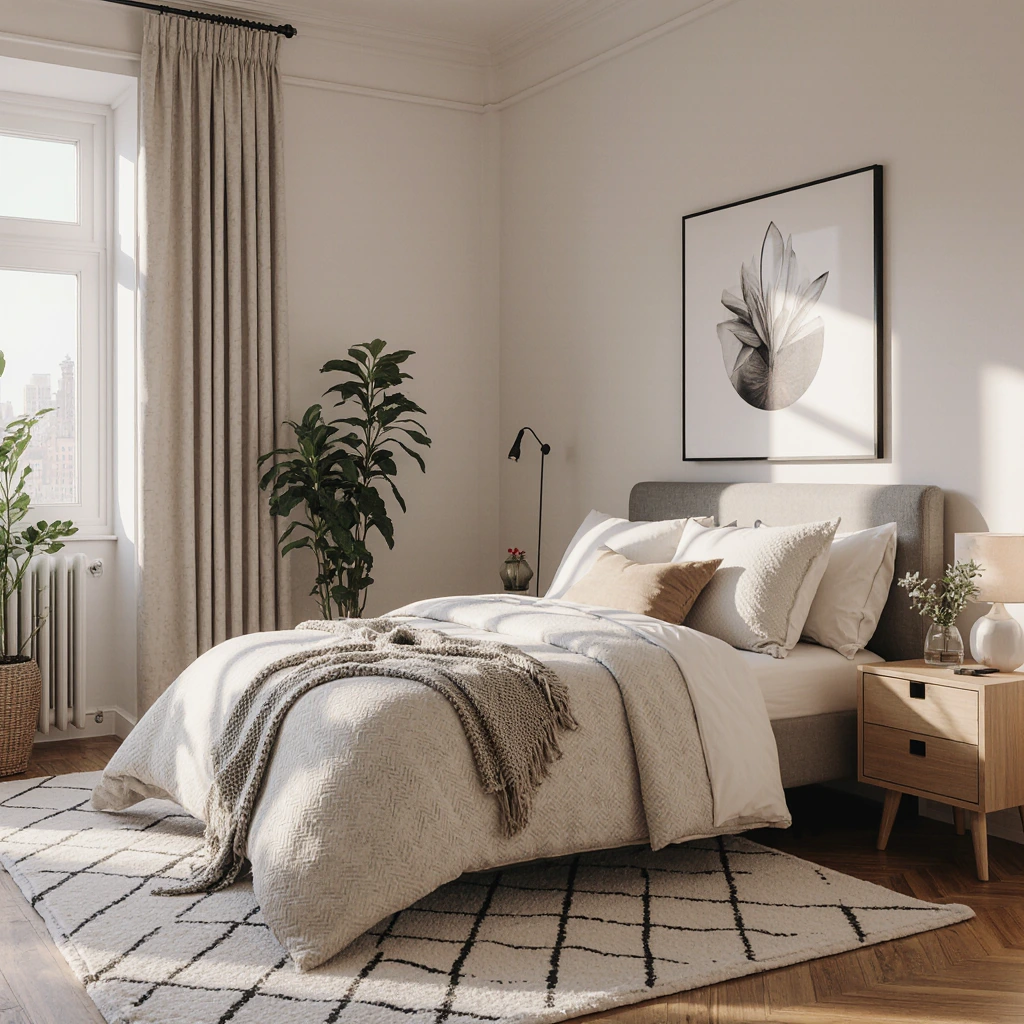
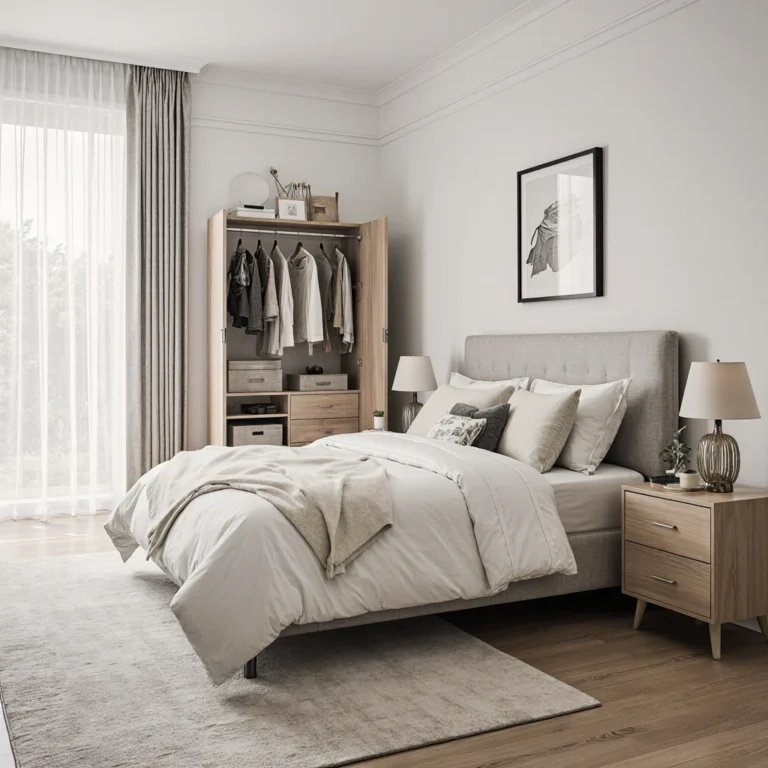
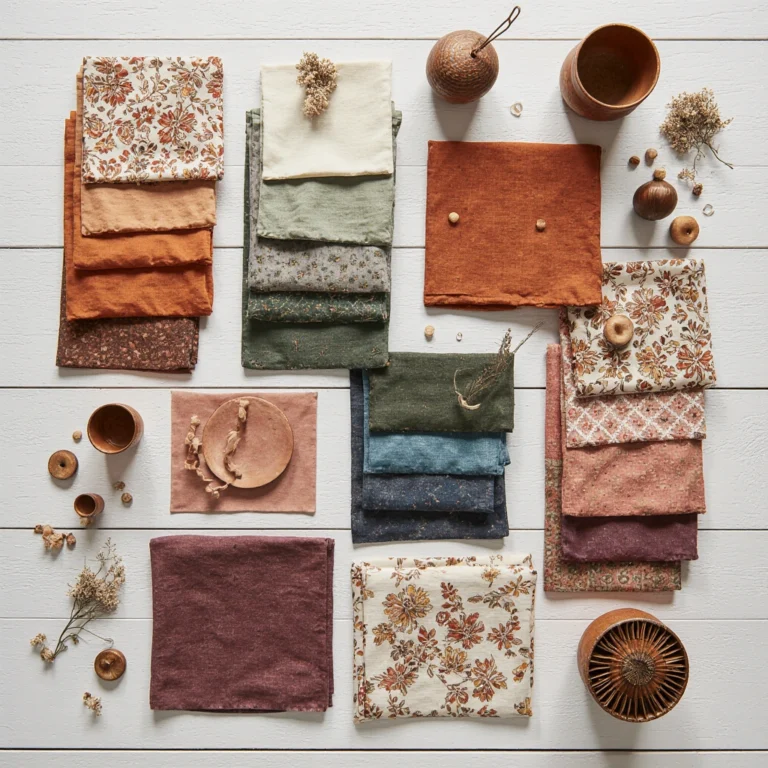
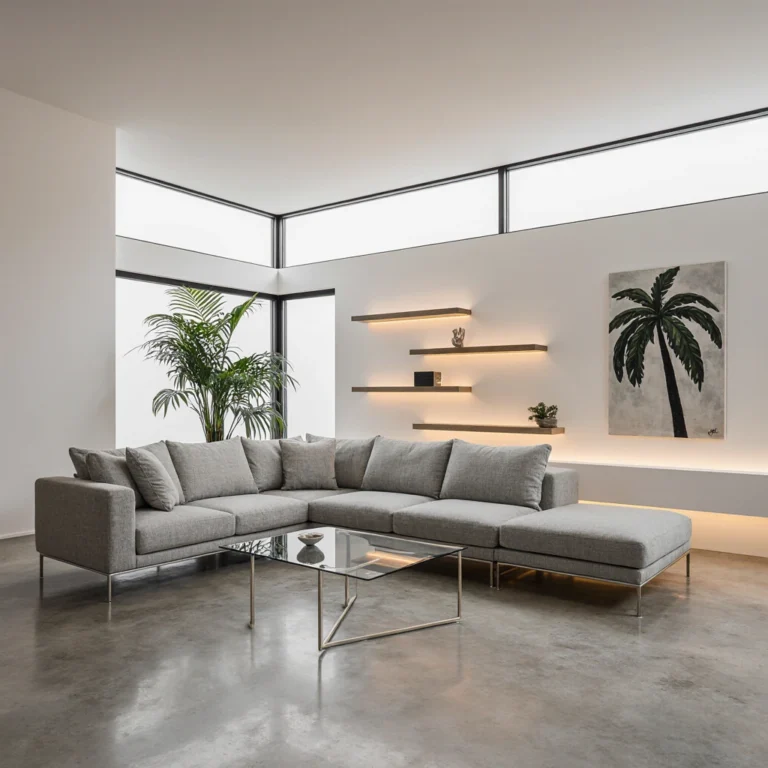
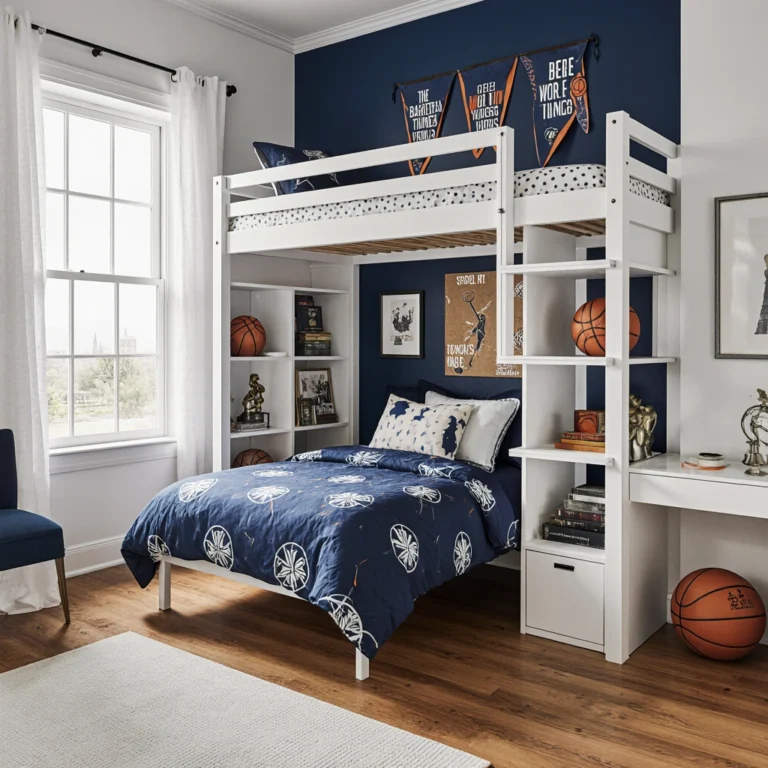
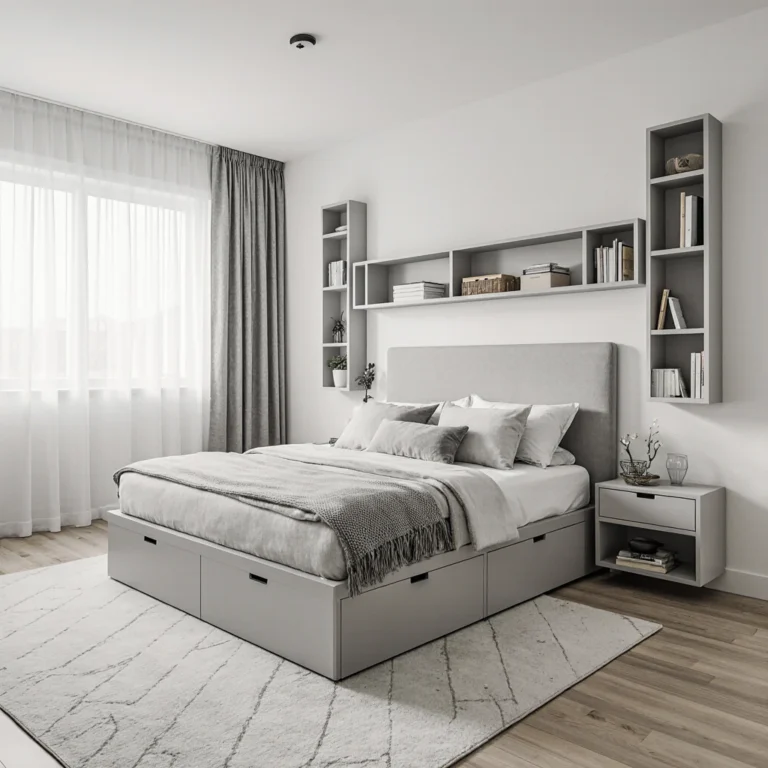
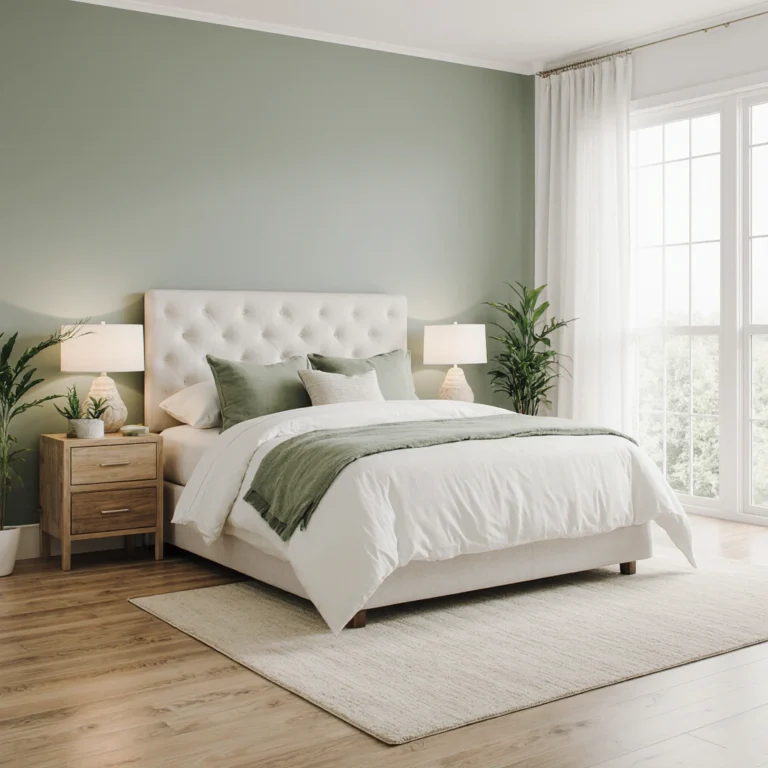
One Comment
Comments are closed.